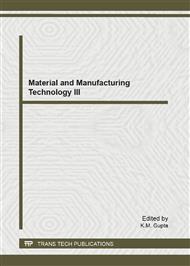p.730
p.735
p.740
p.744
p.749
p.753
p.758
p.762
p.767
Research on On-Line Surface Defect Detection for Steel Strip Based on Sparse Coding
Abstract:
In the field of metallurgy, surface defects detection for steel plate based on machine vision is a new key technology. In order to improve the accuracy and speed of machine vision in real-time surface defects detection, taking into account the neurons selectivity and sparseness to visual information, we present a flexible data selection mechanism in the layer of photoreceptors and a new sparse coding model for object feature representation and object recognition. Experiments show that the new method is more effective and more effective in the process of training and classification. The key finding of this study is that, the effective sparse coding mechanism not only could have occurred in the data input stage, but also could be in a new way.
Info:
Periodical:
Pages:
749-752
Citation:
Online since:
July 2012
Authors:
Price:
Сopyright:
© 2012 Trans Tech Publications Ltd. All Rights Reserved
Share:
Citation:


